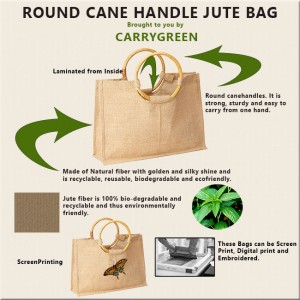totes
-
Posted: November 17, 2018Tags: winebags, totes, stylus, pens, padfolios, holidayshoppinggiftguide, giftguide2018, giftbags, freeshipping, economicalgiftideasfor2018, ecofriendlygiftbags, corporategiftideasforholidays, corporatechocolateboxes, contigobottles, chocolategiftideas, chocolategiftboxes, carrygreen, candiesforholidays, candies, brandedgift, bpafreebottles, bpafree, bagsRead more »
Stumped for Holiday Gift Ideas? Combine Utility with Eco-Friendly Themes
With the holidays coming up quickly, you’re probably on the lookout for gifts for friends, family members, and perhaps, clients and employees depending on the scale your business operations. With more than 75% of Americans admitting that they are keenly conscious of their impact on the environment, 2018 is all about eco-friendly holiday gift ideas. Most people you talk to are making an effort to minimize wasteful expenditure and bring their loved ones practical gifts that are sustainable and will help lower the carbon footprint. After all, you do want to bring someone a gift he
-
Posted: June 21, 2016Categories: Products, Jute, Cotton Bags, Non-Woven Bags, Reusable Bags, Promotional Items, Drawstring Bags, Insulated Tote BagsRead more »
Printed bags can be made of jute, cotton, cloth, or any other affordable material that are quite easy to design and print on. For mass marketing efforts, you can order bags made from very affordable material and have them printed on which further saves you money.
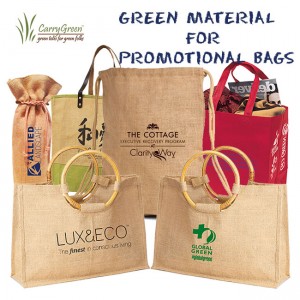
For example, if you want to add a Green factor to your drive to better appeal to the growing numbers of environmentalists out there, always pay attention to what you are giving away. If you want to give away printed bags, then give away bags that are made from Green material such as jute. Other materials would apply to other marketing drives, like using
-
Posted: May 03, 2016Categories: ProductsRead more »
A lot of products these days are claiming to be recyclable, biodegradable, made from recycled materials, etc. An item that is biodegradable is a product or material made from an eco-friendly material that decomposes in landfills or other environments such as people litter or roadsides. Natural materials are biodegradable because they come directly from other natural fibers or plants. A large majority of the natural fibers are produced by plants. These kinds of materials are made from cotton – the largest plant fiber. Jute is the second largest plant fiber in manufacturing material. Natural fibers are also produced by animals. Materials like wool from sheep and alpaca fibers will decompose naturally. The fibers are woven into fabric and it is the fiber that is biodegradable.
-
Posted: April 19, 2016Read more »
Individuals not connected to any organization or business can use printed jute bags for themselves or give them away as gifts.
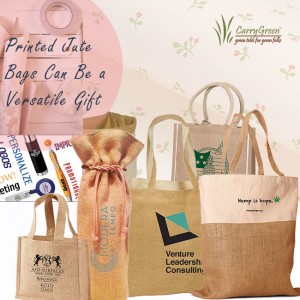 Printed jute bags can say anything that you want in order to express your individuality in a public manner. These jute bags are great for college graduates and high school students. They are great anniversary gifts, wedding gifts, and birthday gifts. You can take a jute bag and have an anniversary or a wedding date printed on it. It would be very personal and an unusual gift that nobody else would think of getting them. Printed jute bags can be versatile in a lot of ways.
Printed jute bags can say anything that you want in order to express your individuality in a public manner. These jute bags are great for college graduates and high school students. They are great anniversary gifts, wedding gifts, and birthday gifts. You can take a jute bag and have an anniversary or a wedding date printed on it. It would be very personal and an unusual gift that nobody else would think of getting them. Printed jute bags can be versatile in a lot of ways. -
Posted: March 09, 2016Read more »
The greatest benefit here is that there are no pesticides and fertilizers used so it is not poisoning the environment or the people involved in production. Care taken over soil preparation allows it to retain the moisture and reduces the need for supplementary irrigation.
-
Posted: January 01, 2016Read more »
The holidays are finally over and we can hopefully begin slowing down and getting our lives back to normal.
 It is not too late to make recycling resolutions. New Years are a great opportunity to not only reuse, but to recycle. Almost all of the boxes and wrapping paper can be recycled. There are practically endless possibilities to reuse. Most of the ribbons that are used to pack gifts can be used for several years. A lot of boxes that hold the gifts can be used for packaging gifts the next year. Some stores even charge for gift boxes! Pretty little gift bags can be used for somebody else’s gift anyplace down the road. T
It is not too late to make recycling resolutions. New Years are a great opportunity to not only reuse, but to recycle. Almost all of the boxes and wrapping paper can be recycled. There are practically endless possibilities to reuse. Most of the ribbons that are used to pack gifts can be used for several years. A lot of boxes that hold the gifts can be used for packaging gifts the next year. Some stores even charge for gift boxes! Pretty little gift bags can be used for somebody else’s gift anyplace down the road. T -
Posted: December 15, 2015
-
Posted: June 29, 2015Categories: TipsRead more »
Kenaf is still not a household name. Recycling is king but not kenaf, nor any of the other plant fiber alternatives to wood pulping for that matter. We recycle, but we pay very little attention to finding the ultimate alternative to using trees for making paper products. There has been very little progress in telling the world about this crop and its myriad uses. And that is a real shame because the benefits derived from growing, distributing and making paper products out of kenaf are so obvious that even consumers who are not researchers or specialists cannot dispute them. Nowadays, there is an even greater urgency to find the best possible solutions to our ever-worsening environmental situation. Just as alternatives to fossil fuels are being aggressively researched, alternatives to wood pulping for paper products must also be pursued with equal commitment. Raising awareness, governmental support, and funding that
-
Posted: June 25, 2015Categories: TipsRead more »
Many people are shockingly still not aware that wood and wood products come from living forests. From the cutting of huge tracts of forests to the poisoning of the rivers and streams with chlorine and dioxin run-off from paper mills, making paper from wood just does not make a lot of sense, especially in this day and age. If people were aware that they could have a high quality paper product that would not become brittle or yellow with age, that could be made cheaply and would do less harm to the environment, real changes might begin to rumble through the papermaking industry. The word needs to be spread. The idea has to take hold. People need to be educated first, and then encouraged to act on their knowledge and convictions.
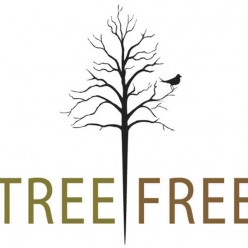
-
Posted: June 22, 2015Read more »
Non-wood plant fibers have been used to make paper for centuries. Nowadays jute, kenaf and other similar fibers are cultivated in Southeast Asia and the Far East. Kenaf is one of the allied fibers of jute and shows similar
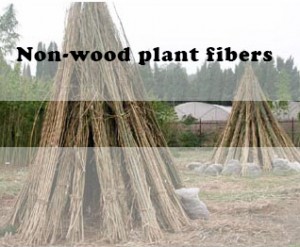 22characteristics. Kenaf was long used for pulp production in Bengal and came to the attention of the West probably in the late nineteenth century when it was noted as a strong fiber, that was superior in strength to even the paper from which the Bank of England notes were made. The kenaf plant has been selected from 500 other plants as the most promising non-wood fiber alternative for the manufacture
22characteristics. Kenaf was long used for pulp production in Bengal and came to the attention of the West probably in the late nineteenth century when it was noted as a strong fiber, that was superior in strength to even the paper from which the Bank of England notes were made. The kenaf plant has been selected from 500 other plants as the most promising non-wood fiber alternative for the manufacture


